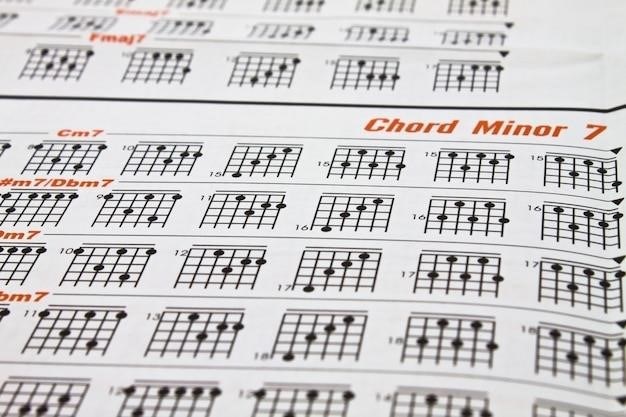rhythm practice sheets pdf

Rhythm Practice Sheets PDF⁚ A Comprehensive Guide
This guide explores the diverse world of rhythm practice sheets in PDF format, offering insights into locating free resources, various worksheet types, and effective utilization strategies for beginners, intermediate, and advanced musicians․ We’ll examine valuable online and offline resources, incorporating technology and establishing consistent practice routines for optimal rhythmic development․
Finding Free Rhythm Worksheets Online
Numerous websites offer free downloadable rhythm worksheets catering to various skill levels․ A simple online search for “free rhythm worksheets PDF” yields a plethora of results․ Many educational platforms and music education blogs provide these resources, often categorized by rhythmic complexity and musical style․ Some websites specialize in printable music education materials, offering rhythm exercises alongside other music theory worksheets․ Remember to check the terms of use before distributing or modifying any downloaded materials․ Always prioritize reputable sources to ensure accuracy and pedagogical soundness․ Websites such as shedthemusic․com offer free rhythm worksheets covering various rhythmic concepts․ Look for sites offering a variety of options including those with eighth notes, triplets, sixteenth notes, and compound meters․ Careful selection ensures you find resources perfectly suited to your needs․
Types of Rhythm Worksheets Available
Rhythm worksheets encompass a wide spectrum of exercises, catering to diverse learning styles and skill levels․ Basic worksheets focus on fundamental rhythmic notation, introducing simple note values like quarter and eighth notes, often within straightforward time signatures like 4/4․ Intermediate worksheets introduce more complex rhythmic patterns, incorporating dotted notes, rests, and syncopation․ Advanced worksheets delve into challenging polyrhythms, complex time signatures (like 6/8 or 7/8), and might even incorporate rhythmic dictation exercises․ Some worksheets concentrate on specific rhythmic concepts, such as triplets or compound time, while others offer a broader range of exercises․ Many incorporate rhythmic transcription or composition exercises, encouraging creative application of learned rhythmic skills․ The availability of different formats, including those focusing on specific instruments or musical genres, expands the options available to learners․
Worksheets for Specific Rhythmic Concepts (e․g․, Triplets, Compound Time)
Targeted rhythm practice sheets offer focused training on specific rhythmic challenges․ Worksheets dedicated to triplets provide extensive exercises in recognizing and notating these three-note groupings within various contexts․ Similarly, compound time worksheets address the complexities of compound meters (like 6/8 and 9/8), emphasizing the division of beats into three subdivisions․ These specialized sheets often include explanations of the underlying concepts, aiding comprehension․ Exercises may range from simple note identification and counting to more involved rhythmic transcriptions and improvisational activities․ The availability of such focused materials allows for systematic development of proficiency in these often-challenging rhythmic areas, building a strong foundation for more advanced musical studies․

Utilizing Rhythm Practice Sheets Effectively
Maximize the benefit of rhythm practice sheets by focusing on consistent practice, starting with simpler exercises and gradually progressing to more complex rhythmic patterns․ Regular, focused sessions are key to skill development․
Beginner Rhythm Practice Sheets⁚ Simple Rhythms and Time Signatures
Beginner rhythm practice sheets should focus on fundamental rhythmic concepts․ Start with simple time signatures like 2/4 and 4/4, using only quarter notes, half notes, and whole notes․ Introduce rests gradually․ These sheets should emphasize consistent pulse and counting aloud while clapping or tapping the rhythms․ Visual aids, like color-coding or highlighting, can be beneficial․ Simple exercises help build a solid foundation before introducing more complex rhythms․ Many free resources online offer these basic exercises․ Ensure the exercises are repetitive enough to reinforce the learning, yet varied enough to maintain engagement․ The goal is to develop a strong internal sense of pulse and rhythmic accuracy before moving on to more challenging materials․ Remember, mastering the basics is crucial for future rhythmic development․ Keep practice sessions short and frequent for best results․ Positive reinforcement and encouragement are key to maintaining motivation during this initial phase of learning․
Intermediate Rhythm Practice Sheets⁚ Introducing Complex Rhythms
Intermediate rhythm practice sheets introduce more intricate rhythmic patterns and time signatures․ Eighth notes, sixteenth notes, and dotted notes become central, alongside rests of varying durations․ Compound time signatures (e․g․, 6/8, 9/8) are introduced, challenging students to subdivide beats effectively․ Syncopation, the deliberate displacement of the rhythmic accent, is also incorporated to enhance rhythmic flexibility and understanding․ These sheets often feature exercises that combine different note values and rests within a single measure, requiring careful attention to detail and counting․ The use of rhythmic notation becomes increasingly important, demanding accurate interpretation of musical symbols․ Students should practice reading and performing the rhythms with a metronome to develop precision and timing․ The incorporation of simple melodies can further enhance engagement and application of rhythmic skills․ Regular practice is key to internalizing these complex patterns and achieving proficiency․
Advanced Rhythm Practice Sheets⁚ Challenging Rhythmic Patterns and Polyrhythms
Advanced rhythm practice sheets delve into complex rhythmic concepts, pushing students beyond basic note values and time signatures․ These sheets frequently incorporate polyrhythms, where two or more independent rhythmic patterns are played simultaneously, requiring a high level of coordination and rhythmic independence․ Complex meters, such as 5/4, 7/8, and other irregular time signatures, are common, demanding a strong internal sense of pulse and rhythmic organization․ Tuplets, such as quintuplets and septuplets, further challenge students’ ability to subdivide beats precisely․ The sheets might include exercises that combine these elements, requiring advanced note reading skills and mental agility․ Syncopation is heavily featured, often with multiple layers of rhythmic displacement․ These exercises are best practiced with a metronome for accurate timing and a recording device for self-assessment․ A strong foundation in basic rhythmic concepts is essential before tackling the advanced challenges presented in these materials․ The goal is to develop a sophisticated understanding of rhythm and the ability to execute complex patterns with precision and musicality․
Resources for Rhythm Practice Sheets
Numerous websites, educational platforms, and publications offer downloadable rhythm practice sheets and exercises in PDF format, catering to various skill levels and musical styles․
Websites Offering Free Downloadable Rhythm Worksheets
The internet provides a wealth of free rhythm worksheet resources․ Many websites dedicated to music education offer downloadable PDFs, often categorized by skill level (beginner, intermediate, advanced)․ These websites frequently include various rhythmic concepts, such as simple and compound meters, dotted notes, triplets, and syncopation․ Some sites provide worksheets focusing on specific time signatures (e․g․, 2/4, 3/4, 4/4, 6/8), while others offer a more comprehensive collection encompassing a wider range of rhythmic complexities․ Look for websites specializing in music theory or instrumental instruction; many offer free downloadable resources as supplemental learning materials․ Remember to always check the terms of use before downloading and distributing any materials․
Educational Platforms with Rhythm Practice Resources
Numerous online educational platforms integrate rhythm practice resources into their curricula․ These platforms often feature interactive exercises, allowing students to test their understanding of rhythmic notation and patterns through engaging activities․ Some platforms offer a structured learning path, progressing from basic rhythmic concepts to more advanced material․ Subscription-based platforms may provide comprehensive rhythm training modules, including video lessons, interactive exercises, and assessments․ These platforms can be valuable tools for both self-directed learning and structured classroom instruction, offering a dynamic alternative to traditional worksheets․ Look for platforms that align with your specific learning goals and musical instrument․
Books and Publications Featuring Rhythm Exercises
Beyond online resources, numerous books and publications offer comprehensive rhythm exercises․ These resources often provide a structured progression of rhythmic concepts, starting with foundational elements and gradually introducing more complex patterns․ Many books include a variety of rhythmic exercises, encompassing different time signatures, note values, and rhythmic complexities․ Some publications focus specifically on rhythmic development for particular instruments, while others offer more general rhythmic training suitable for various musical contexts․ These books can provide a valuable supplement to online resources, offering a tangible and structured approach to rhythmic practice․ Look for books that align with your skill level and musical goals, considering factors such as the included exercises and the overall pedagogical approach․
Beyond the Sheets⁚ Enhancing Rhythm Practice
Effective rhythm practice transcends worksheets; integrate rhythmic exercises into musical performance, leverage technology for interactive training, and cultivate a consistent, personalized practice routine for optimal results․
Incorporating Rhythm Practice into Musical Performance
Integrating rhythm practice directly into musical performance offers a dynamic and engaging approach to skill development․ Instead of solely relying on isolated exercises, actively incorporate rhythmic challenges within familiar pieces․ Start by identifying sections requiring rhythmic precision and focus your practice on these areas․ For instance, if a piece features complex syncopation or intricate rhythmic patterns, dedicate time to meticulously practicing these passages, gradually increasing tempo and accuracy․ This approach allows for practical application of learned rhythmic concepts, enhancing both technical proficiency and musical expression․ Consider using a metronome or drum machine to maintain a steady tempo and refine timing․ Playing along with recordings of the piece can further enhance rhythmic accuracy and provide valuable feedback․ Remember to focus on both accuracy and musicality, ensuring that the rhythmic precision complements the overall artistic interpretation of the piece․ Through consistent application and focused practice within the musical context, you can effectively bridge the gap between theoretical understanding and musical execution, leading to a more profound and fulfilling musical experience․
Using Technology for Interactive Rhythm Training
Leverage technology to enhance rhythm practice beyond static worksheets․ Numerous apps and software programs offer interactive rhythm training, providing engaging and personalized experiences․ These tools often incorporate gamification, making practice more enjoyable and motivating․ Metronome apps offer precise tempo control, crucial for developing rhythmic accuracy․ Rhythm-based games challenge your ability to recognize and reproduce patterns, fostering quick reflexes and improving timing․ Software programs often include features like playback and analysis tools, allowing you to assess your performance and pinpoint areas needing improvement․ Interactive exercises can simulate real-world musical scenarios, such as playing along with backing tracks or other instrumental parts, adding another layer of complexity and engagement to your practice․ Explore online resources offering interactive rhythm exercises, videos, and tutorials, supplementing your PDF worksheets with dynamic, technology-driven learning experiences․ Remember to choose tools that align with your learning style and musical goals․ The combination of technology and focused practice will lead to more effective and enjoyable rhythm training․
Developing a Consistent Rhythm Practice Routine
Establishing a consistent rhythm practice routine is key to improvement․ Begin by setting realistic, achievable goals․ Instead of overwhelming yourself with lengthy sessions, start with shorter, focused practice periods, gradually increasing duration as you progress․ Consistency is more important than length․ Schedule dedicated practice time, treating it like any other important appointment․ Integrate rhythm exercises into your daily routine, even if it’s just for 10-15 minutes․ Use a planner or calendar to track your progress and stay motivated․ Vary your practice methods, incorporating different exercises and techniques to prevent boredom and maintain engagement․ Combine rhythm practice with other musical activities, such as playing an instrument or singing․ Regularly review previously learned material to reinforce your understanding and prevent skill degradation․ Record yourself playing and listen back critically to identify areas for improvement․ Celebrate your milestones, no matter how small, to boost your confidence and maintain momentum․ Remember, consistent, focused practice is the foundation of rhythmic proficiency․


